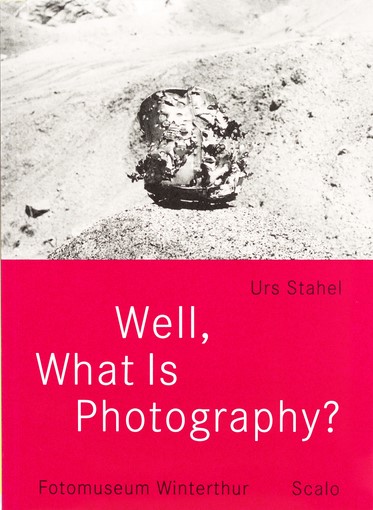Introduction: “Well, What is Photography?” by Urs Stahel is a thought-provoking exploration into the nature and role of photography in contemporary society. Stahel, a renowned curator and writer, offers deep insights into the philosophical, technical, and cultural aspects of photography. His work is a blend of theoretical analysis and practical understanding, addressing how photography has evolved and its impact on the way we perceive the world.
1. The Essence of Photography
Defining Photography:
- Stahel begins by grappling with the fundamental question of what photography is. He examines the intrinsic qualities that differentiate photography from other visual arts.
- Photography is described as a medium that captures light to create images, but Stahel goes beyond this technical definition to explore its broader implications.
The Dual Nature:
- Photography is unique in its dual nature, serving both as a document of reality and as an artistic expression. This duality is a recurring theme in Stahel’s analysis.
- Stahel emphasizes how photography can simultaneously present objective truth and subjective interpretation, blurring the lines between fact and fiction.
2. Historical Evolution
From Daguerreotype to Digital:
- The historical development of photography is traced from its invention in the early 19th century to the digital age. Stahel highlights key technological advancements and their impact on photographic practice.
- He discusses how each era of photography, from the daguerreotype to the smartphone, has brought changes in how images are produced and consumed.
Influential Movements and Figures:
- Stahel delves into influential movements and photographers who have shaped the medium. He examines the contributions of pioneers like Daguerre and Talbot, as well as modern innovators like William Eggleston and Paul Graham.
- The evolution of styles and techniques over time is explored, showing how photography has been influenced by and has influenced cultural and artistic trends.
3. Photography as Art and Document
Artistic Medium:
- Stahel discusses photography’s place within the art world. He addresses the debate over whether photography should be considered a fine art, given its mechanical origins and reproducibility.
- The acceptance of photography as an art form is chronicled, noting pivotal moments and exhibitions that helped cement its status.
Documentary Function:
- The documentary aspect of photography is also a major focus. Stahel explores how photography has been used to document reality, from social issues to historical events.
- The role of photojournalism and documentary photography in shaping public opinion and recording history is analyzed, highlighting both its power and its ethical dilemmas.
4. The Impact of Technology
Digital Revolution:
- The transition from analog to digital photography is discussed in depth. Stahel examines how digital technology has transformed the way photographs are taken, edited, and shared.
- The implications of digital manipulation and the ease of distribution via the internet are considered, raising questions about authenticity and the democratization of image-making.
Technological Innovations:
- Stahel looks at specific technological innovations that have revolutionized photography, such as the development of color film, autofocus, and digital sensors.
- The impact of these technologies on both amateur and professional photography is assessed, showing how they have expanded the possibilities of the medium.
5. Cultural and Social Significance
Photography in Everyday Life:
- The ubiquity of photography in everyday life is a central theme. Stahel explores how photography is embedded in daily activities, from social media to personal archives.
- The role of photography in self-expression and identity formation is discussed, particularly in the context of the selfie culture and the proliferation of personal images online.
Visual Culture:
- Stahel places photography within the broader context of visual culture. He examines how photographs contribute to the visual landscape of modern society and influence other forms of media and communication.
- The interplay between photography, cinema, television, and digital media is explored, highlighting the medium’s pervasive influence.
6. Philosophical and Theoretical Perspectives
Seeing and Perception:
- Stahel engages with philosophical questions about seeing and perception. He explores how photography alters our understanding of reality and our ways of seeing the world.
- The concept of the photographic gaze is discussed, analyzing how the act of photographing involves choices that reflect the photographer’s perspective and biases.
The Ontology of the Image:
- The ontology of photographic images is another key theme. Stahel examines the nature of photographic images, their relationship to time and memory, and their status as representations of reality.
- He delves into theories of semiotics and visual representation, discussing how photographs convey meaning and how they are interpreted by viewers.
7. Ethical Considerations
Representation and Ethics:
- The ethical dimensions of photography are critically examined. Stahel addresses issues of representation, consent, and the potential for exploitation, particularly in documentary and journalistic contexts.
- The responsibilities of photographers towards their subjects and audiences are discussed, emphasizing the need for ethical awareness in photographic practice.
Impact of Images:
- Stahel also considers the broader social impact of photographic images. He discusses how images can shape public perception, influence behavior, and even incite action or controversy.
- The role of iconic images in collective memory and their power to evoke emotional and political responses is analyzed.
Conclusion
“Well, What is Photography?” by Urs Stahel is a comprehensive exploration of the medium of photography, examining its technical, artistic, cultural, and philosophical dimensions. Stahel’s work provides a deep understanding of photography’s dual role as an art form and a documentary tool, its historical evolution, the impact of technological advancements, and its pervasive influence on modern visual culture. Through thoughtful analysis and critical engagement, Stahel challenges readers to reconsider their assumptions about photography and appreciate its complexity and significance in contemporary society.
Additional Resources:
For more in-depth reviews and insights, you may refer to the following links:

